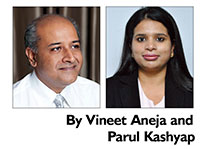 There is a compelling need to develop sustainable and technology-driven urban centres, partly as the burgeoning urban population is creating pressure on existing cities and partly to address the growing aspirations of a large neo-middle class that is emerging in the tier-I and tier-II towns in India. As per the Concept Note for Smart Cities, the urban population being around 31 percent of the total population contributes over 60 percent to India’s GDP. It is projected that urban India will contribute nearly 75 percent of the national GDP in the next 15 years. Therefore, with an urban population of 31 percent, India is at a point of transition where the pace of urbanisation is expected to speed up. It is in this context that it becomes critical to plan the urban landscape in a way that is efficient, smart and fosters economic growth. Missions for urban renewal launched
Below are the highlights of newly launched missions. Smart Cities Mission Atal Mission for Rejuvenation and Urban Transformation (AMRUT) The central assistance towards AMRUT will be to the extent of 50 percent of project cost for cities and towns with population of up to 1 million and one-third of the project cost for those above 1 million. This amount will be released in three instalments in the ratio of 20:40:40, based on achievement of milestones indicated in state annual action plans. Housing for all by 2022 Funding options Conclusion |
Clasis Law
14th Floor, Dr Gopal Das Bhawan,
28, Barakhamba Road, New Delhi 110 001, India
Tel: (91) 11 4213 0000 / Fax: (91) 11 4213 0099
Email: vineet.aneja@clasislaw.com
parul.kashyap@clasislaw.com
www.clasislaw.com

